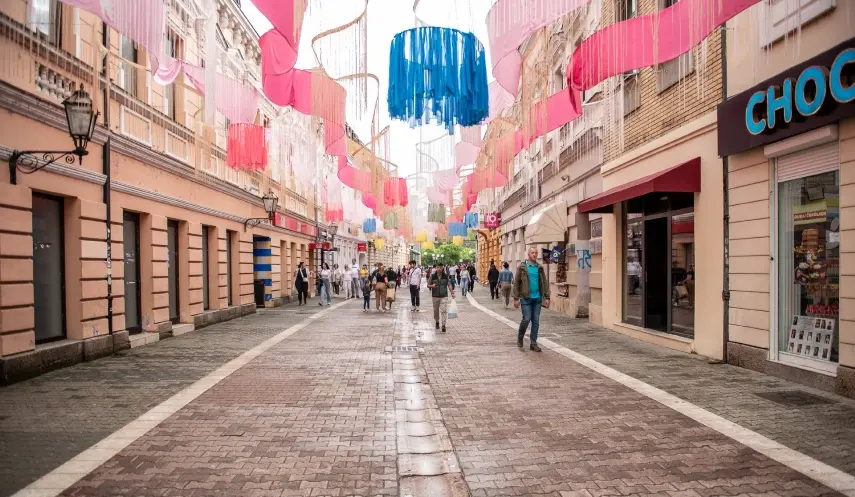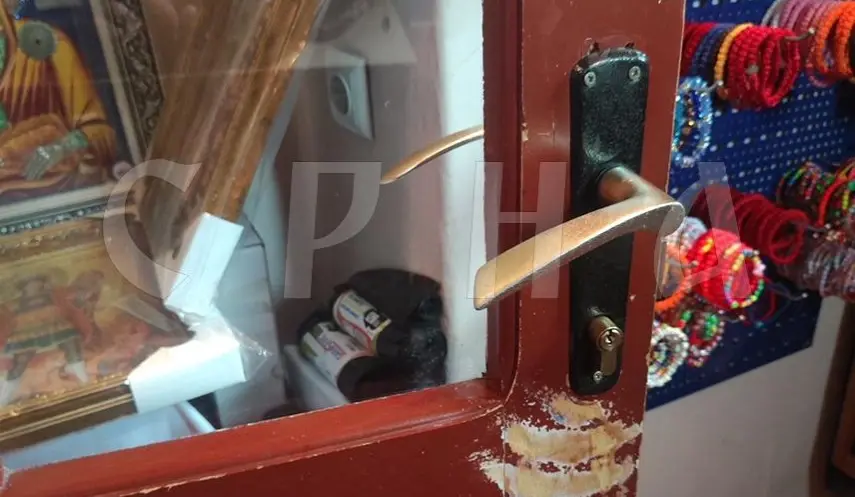GOSPODSKA STREET - SUNG WITH SOUL
Republika Srpska - Banja Luka - sights /8/
06/09/2025
10:03

BANJA LUKA, JUNE 9 /SRNA/ - The current Gospodska Street started began to flourish, according to factographers, at the end of the 19th century under Austro-Hungarian rule, when it became a symbol of elegance and prestige.
During its golden years, the street was home not only to wealthy merchants, but also to romantic love stories that lurked in the shadows of its alleyways.
Should it be surprising to hear romantic stories spread, knowing that one of the associations with Banja Luka, besides its alleys, is the scent of linden trees, the Vrbas River and the Banja Luka women?
This was felt not only by those whose ID card says they were born in Banja Luka, but also those who chose it. They have always intrigued the imagination of the opposite sex and caused a bit of envy in other ladies.
"What's the magic? Maybe it's because Banja Luka itself is feminine," says the only granddaughter of the fourth Ban, Nadežda Lazarević Kovačević.
In her book "Like a Beautiful Dream", she states that the buildings on Gospodska Street suffered significant damage after the 1969 earthquake, most often because after World War II, large shop windows were built in the ground floor shops, many transverse load-bearing walls were demolished in order to increase the sales space, or several shops were merged into one.
"They didn't pay much attention to the statics of the buildings, and then the buildings simply collapsed. There was an idea to completely demolish the street, which fortunately was not realized. In the end, it was decided to proceed with restoration, but to change the purpose, that is, to completely abolish the residential space. Because until World War II, all of these were residential and commercial buildings," Lazarević-Kovačević pointed out.
On the upper floor, there were apartments that met the highest standards of civic life at the time and shops were on the ground floor. All of these houses, both on the main street and on the other side of the street in the back, had large yards in which there were usually auxiliary ground-floor buildings, which the owners often converted into shops and rented out.
"What we see today are only scenes. Most of the buildings were completely demolished, so completely new ones were built in the existing dimensions, from different materials and with a different layout of rooms. In some places, the attics were converted into apartments. Only the facades were made in the image of the old ones, but with much fewer decorative elements, so even those are not completely authentic. But, again, with enough charm to seduce passers-by even today, with a piece of the past, laughter, whispers and music, and also with some shopping or catering establishments," she said.
Today's Gospodska Street is not only a passage through the past, but also a pulsating route that connects the most important points of modern Banja Luka.
Strollers love to walk from the National Theater, through the beautiful park, down Gospodska Street to Krajina Square, all the way to the new small square at the steps of the Market Square. But this street is much more than an ordinary promenade. It is a place where history and modernity, legends and reality, intertwine. Because, as the old people of Banja Luka say - Gospodska Street is where the past never sleeps, and every night hides a new story.
A special and only for now, the last one is the one that plays music to the souls of the people of Banja Luka and everyone who feels that way, and it was sung by singer Boris Režak, dedicated to his city by Banja Luka.
The song, which became beloved by the region, became the anthem of the largest city in Republika Srpska, and is called "Gospodska Street".
"I wanted to leave some kind of legacy for my city. I can't bring home a gold medal, but I can do my best to create a song that will remain even after I'm gone. That was my guiding star and thank God I succeeded in that," Režak told SRNA.
The singer emphasized that it is a timeless love song, which aims to present the beauty of Banja Luka and its people throughout the region.
"What's wonderful is that all the people accepted it, from the entire region...it's as if it was written for them and they feel it's theirs because I didn't want it to have just a local character, but a general one," said Režak.
"Gospodska Street, September
Gardens full of smiles
And we all know each other
Good people, my good city", it is said in the lyrics of this song.
Every big city has its heart, and for Banja Luka it is Gospodska Street. /end/

BISHOP SERGIJE: IF, GOD FORBID, SUFFERING HAPPENS AGAIN, WE WILL NOT GIVE IN

DRAGIŠIĆ: BOSNIAKS PERSISTENTLY ABUSE VETO

DODIK: ELECTORAL RIGHTS BELONG TO ENTITIES



